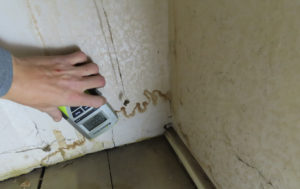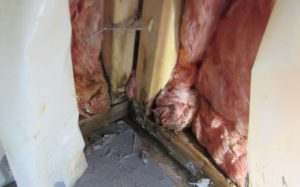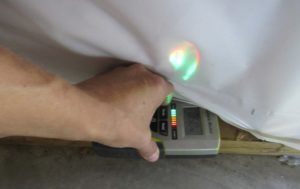Call to Schedule a Mold Inspection In Eden Prairie MN Today! – (952) 583-9012
 If you are unfortunate enough to discover a problem with mold growth in your home in the basement, attic or on the wall of your bedrooms it is imperative that you deal with the problem immediately. Even small spots of mold should be dealt with and treated due to the potential health risks involved.
If you are unfortunate enough to discover a problem with mold growth in your home in the basement, attic or on the wall of your bedrooms it is imperative that you deal with the problem immediately. Even small spots of mold should be dealt with and treated due to the potential health risks involved.
In order to establish the type of mold present and the type of the repairs which will have to be undertaken you will need to have a mold inspection undertaken by a qualified professional. A note of caution: there are numerous mold inspectors out there but it is important that you are not tempted to choose one simply because the cost is minimal.
So, what is a mold inspection all about?
A mold inspection will identify any conditions around your property which will support mold growth as well as pinpointing potential problem areas such as water damage, odorsand obvious signs of fungal growth etc. We will also inspect for signs of water damage, leaks and their sources such as broken pipes, broken gutters, ect.
What does the inspector actually do during a mold inspection?
After the initial visual checks the first job is normally to gauge moisture levels present in the walls of the property. The moisture levels are measured at intervals of about two feet and special attention must paid by the inspector in areas under sinks, around water heaters, anywhere that there is a water source present. Moisture levels are measured using a special meter which has two small pins which are inserted into the lower part of the wall and will give a reading to show the level of moisture present. The acceptable level is 15% or below.

The sample taken is most likely to be an air sample. By taking air samples during a mold inspection it is possible to establish what strain of mold is present in the atmosphere and in what quantities. I must point out at this stage that the mold inspector has to take at least two air samples. The first should be from the area which is causing concern and the second should from outside. Why take a sample from outside? The answer to this is easy. Mold is found everywhere, we breath it in all the time and for the most part it is 100% safe and does us no harm what so ever. So, during a mold inspection it has to be established whether or not the mold inside is the same strain as that outside and if it is in the same ratio or less. The other side of the coin is obviously that the mold type may be the same but the concentrations much higher inside or it may be toxic mold.
Where there is visible mold growth samples of this can also be taken allowing the precise type of mold spores to be identified, however this will not determine whether or not these mold spores are in the air.
How fast can you expect results?
As a rule of thumb, these samples can take 3-4 days to process at the lab but I would definitely expect that your mold inspector make contact and give a verbal report as soon as the results become available followed by a written report within a couple of days. An additional point to be aware of, when it comes to the report following a mold inspection a good mold inspector will not merely send you a copy of the lab report. He/She must able to confidently interpret the results and deliver them together with recommendations to resolve the issue in plain English!
Should you book a mold inspection it is important that you keep doors and windows closed as much as possible for the 12 to 24 hours previous to the inspectors visit. This will allow that the mold inspection results are accurate. It will allow the mold inspector to detect odors and air samples will not contain excess outside air.
If you are unfortunate enough to discover a problem with mold growth in your home be it in the basement, attic or on the wall of your bedrooms or lounge it is imperative that you deal with the problem and immediately. Whilst small spots of mold can be dealt with using DIY methods large areas must be professionally assessed and treated due to the potential health risks involved.

In order to establish the type of mold present and the type of the repairs which will have to be undertaken you will need to have a mold inspection undertaken by a qualified professional. A note of caution: there are numerous mold inspectors out there but it is important that you are not tempted to choose one simply because the cost is minimal. This is a potentially serious situation and you really have to employ the best you can afford.
So, what is a mold inspection all about?
A mold inspection will identify any conditions around your property which will support mold growth as well as pinpointing problem areas for example water damage, odours and obvious signs of fungal growth etc. The mold inspector should take the inspection outside and check the exterior of the dwelling again for obvious signs of water damage, leaks and their sources such as broken pipes, broken gutters, cracked brick work and so on.
What does the inspector actually do during a mold inspection?
After the initial visual checks the first job is normally to gauge moisture levels present in the walls of the property. The moisture levels are measured at intervals of about two feet and special attention must paid by the inspector in areas under sinks, around water heaters, anywhere that there is a water source present. Moisture levels are measured using a special meter which has two small pins which are inserted into the lower part of the wall and will give a reading to show the level of moisture present. The acceptable level is 15% or below.
Should at this point in the mold inspection your inspector discovers wall moisture readings greater than the acceptable figure or comes across signs of water damage or mold growth he/she should bring them to your attention and possibly discuss whether samples should be taken. However, even assuming there are visible stains from water damage or perhaps mold growth the inspector will still be unable to give any indication for certain that you have a mold problem which is why sampling is essential.
The sample taken is most likely to be an air sample. By taking air samples during a mold inspection it is possible to establish what strain of mold is present in the atmosphere and in what quantities. I must point out at this stage that the mold inspector has to take at least two air samples. The first should be from the area which is causing concern and the second should from outside. Why take a sample from outside? The answer to this is easy. Mold is found everywhere, we breath it in all the time and for the most part it is 100% safe and does us no harm what so ever. So, during a mold inspection it has to be established whether or not the mold inside is the same strain as that outside and if it is in the same ratio or less. The other side of the coin is obviously that the mold type may be the same but the concentrations much higher inside or it may be toxic mold.
Where there is visible mold growth samples of this can also be taken allowing the precise type of mold spores to be identified, however this will not determine whether or not these mold spores are in the air.
How fast can you expect results?
As a rule of thumb, these samples can take 3-4 days to process at the lab but I would definitely expect that your mold inspector make contact and give a verbal report as soon as the results become available followed by a written report within a couple of days. An additional point to be aware of, when it comes to the report following a mold inspection a good mold inspector will not merely send you a copy of the lab report. He/She must able to confidently interpret the results and deliver them together with recommendations to resolve the issue in plain English!
NB. Should you book a mold inspection it is important that you keep doors and windows closed as much as possible for the 12 to 24 hours previous to the inspectors visit. This will allow that the mold inspection results are accurate. It will allow the mold inspector to detect odors and air samples will not contain excess outside air.
Call to Schedule a Mold Inspection In Eden Prairie MN Today! – (952) 583-9012